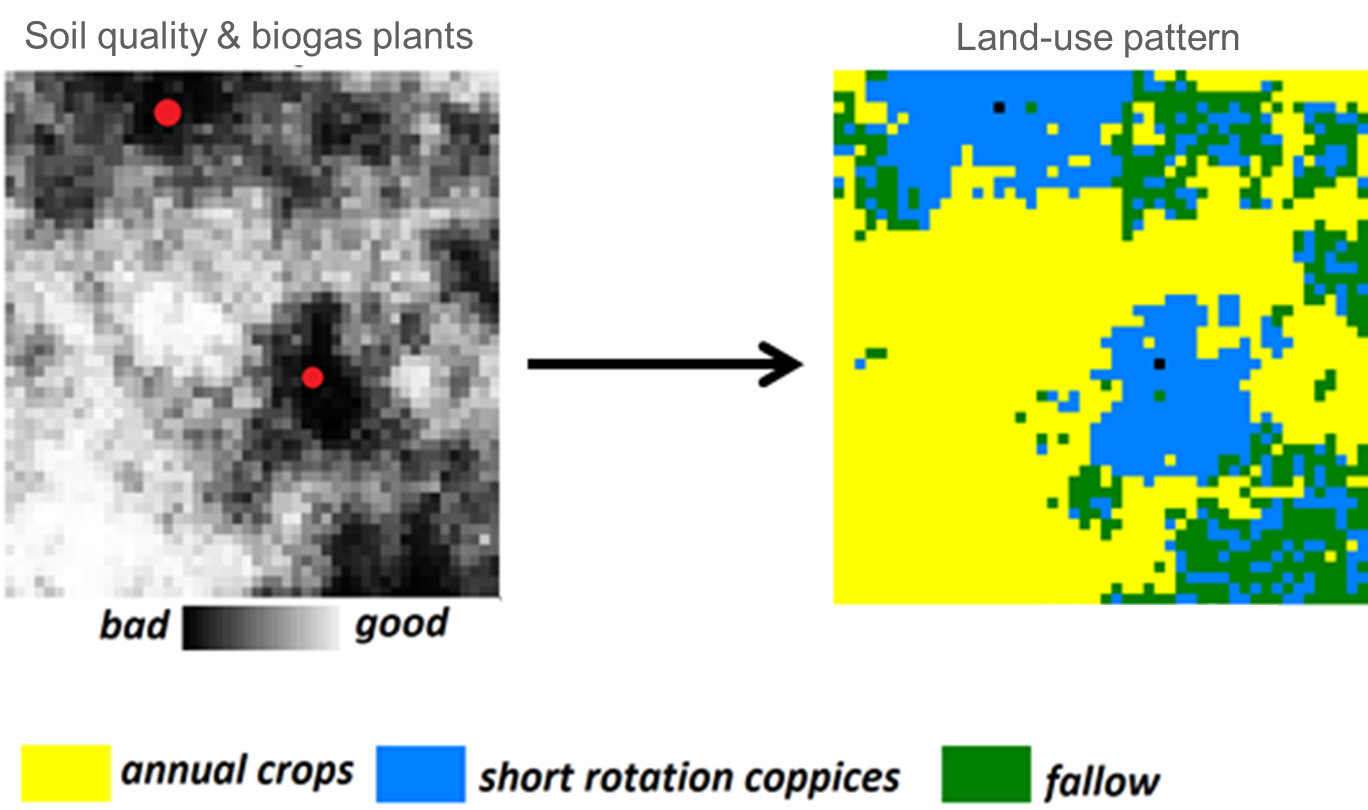Energy Transition
Germany has faced the challenge of an energy transition. The overall target is less dependence on nuclear energy and coal transforming to decentralised renewable energy systems (e.g. based on bioenergy crops, wind and solar power). This ambitious goal is not only promising but also poses risks and adverse effects. The use of bioenergy crops is rapidly growing in the EU and Germany in order to satisfy their need. Currently more than 13% of the European agricultural land is already used for bioenergy crops and landscape composition continues to change rapidly. New use conflicts come up as an increase in biomass requires additional land that could have otherwise been used to grow food crops or conserve wildlife. Beside additional land demand for biogas, wind power and solar plants, power networks will have to be extended - increasingly fragmenting the landscape.
Hence, we meet this challenge by combining ecological, social and economic modelling approaches in the following projects:
- spatially explicit modelling to quantify farmland bird abundance under different land-use scenarios in order to derive mitigation strategies
- modelling the decisions of farmers on land-use patterns influenced by various market and policy instruments and examining their securtity
- analysing the potential of natural habitats (forests, grasslands) for buffering negative impacts of biomass-production driven land-use changes under a changing climate
- investigating ecosystem functions (e.g. biomass supply, carbon storage in soil) of differently managed grasslands, energy grasses and short rotation coppices (SRC) for bioenergy production
- spatially explicit modelling of the energy infrastructure in the transformation from a conventional energy system to a decentralized renewable energy system with the focus on landscape patterns (including security of supply, ecological spatial impacts, economic regulation via policy instruments and the EEG)
- optimization of the spatial distribution of renewable power generation and energy grid expansion in Germany – including production costs, negative external effects and reflections on justice in the society concerning the distribution of costs and externalities
- exploring the impacts of global food security policies on local land use strategies and investigating the resulting social-ecological resilience of smallholding farmers

Selected Publications
- Drechsler, M., Egerer, J., Lange, M., Masurowski, F., Meyerhoff, J., Oehlmann, M. (2017):
Efficient and equitable spatial allocation of renewable power plants at the country scale
Nat. Energy 2 , art. 17124 10.1038/nenergy.2017.124 - Schulze, J., Gawel, E., Nolzen, H., Weise, H., Frank, K. (2017):
The expansion of short rotation forestry: characterization of determinants with an agent-based land use model
GCB Bioenergy 9 (6), 1042 - 1056 10.1111/gcbb.12400 - Masurowski, F., Drechsler, M., Frank, K. (2016):
A spatially explicit assessment of the wind energy potential in response to an increased distance between wind turbines and settlements in Germany
Energy Policy 97 , 343 - 350 10.1016/j.enpol.2016.07.021 - Schulze, J., Frank, K., Priess, J., Meyer, M.A. (2016):
Assessing regional-scale impacts of short rotation coppices on ecosystem services by modeling land-use decisions
PLOS One 11 (4), e0153862 10.1371/journal.pone.0153862 - Lauf, T., Gawel, E., Frank, K. (2015):
The spatial allocation of renewable power infrastructure - An economic assessment of energy landscapes with an agent-based modelling approach
CSSSA 2015 in Santa Fe, October 29 – November 1
The Computational Social Science Society of the Americas (CSSSA), 1 - 18 - Eichhorn, M., Johst, K., Seppelt, R., Drechsler, M. (2012):
Model-based estimation of collision risks of predatory birds with wind turbines
Ecol. Soc. 17 (2), art. 1 10.5751/ES-04594-170201
